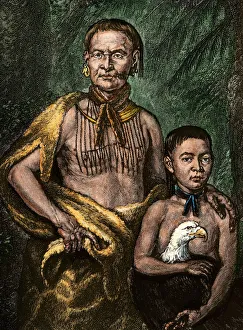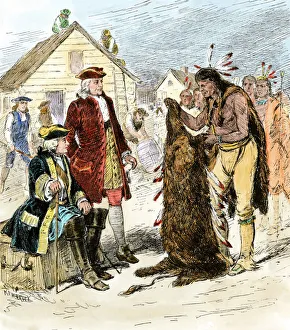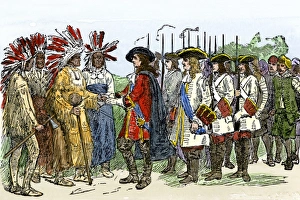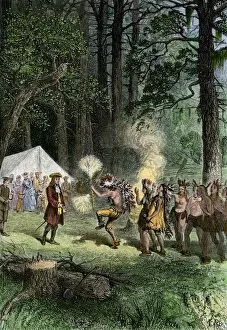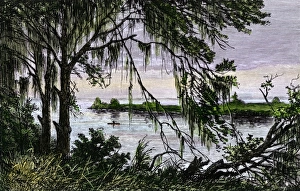Yamacraw Collection
"Yamacraw: The Meeting of Cultures in Colonial Georgia" In the early 1730s, a significant encounter took place between the Yamacraw Indians and the Georgia colonists
All Professionally Made to Order for Quick Shipping
"Yamacraw: The Meeting of Cultures in Colonial Georgia" In the early 1730s, a significant encounter took place between the Yamacraw Indians and the Georgia colonists, led by James Oglethorpe. At the heart of this historic event was Tomochichi, a revered Yamacraw Native American chief, accompanied by his son Tooanahowl. Tomochichi and Oglethorpe formed an unlikely friendship amidst the wilderness of Georgia. Their initial meeting in present-day Savannah marked a pivotal moment in history as two vastly different cultures converged. The wood engravings from various eras depict Tomo-Chichi's dignified presence. His leadership and wisdom were evident as he welcomed Oglethorpe to their land with open arms. In one engraving, Tomo-Chichi offers Oglethorpe a bison skin adorned with an eagle's head and feathers—a symbol of respect and unity. The Yamacraw Indians showcased their rich heritage through their traditional canoes navigating the untouched landscapes of Georgia. These vessels served not only as means of transportation but also as symbols of their connection to nature. This meeting between the Yamacraws and colonists laid the foundation for future interactions that shaped colonial Georgia's history. It exemplified how understanding and mutual respect could bridge cultural divides. Today, we remember this extraordinary encounter as a testament to human connection beyond differences—where friendships blossomed against all odds on these very lands once inhabited by Chief Tomo-Chichi and his people.

